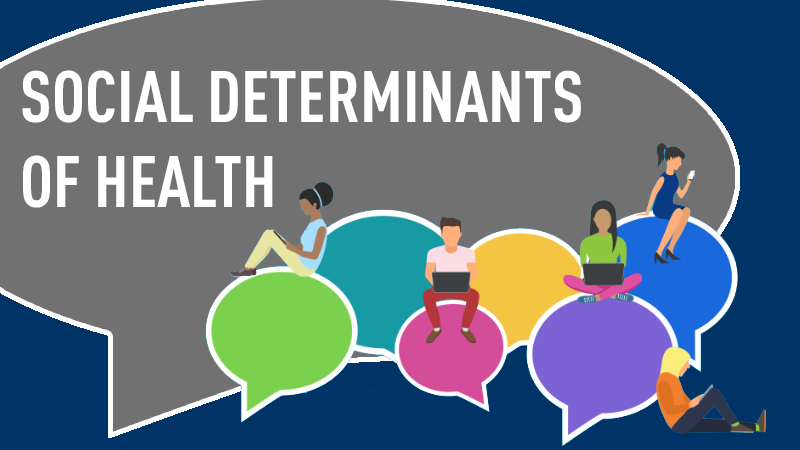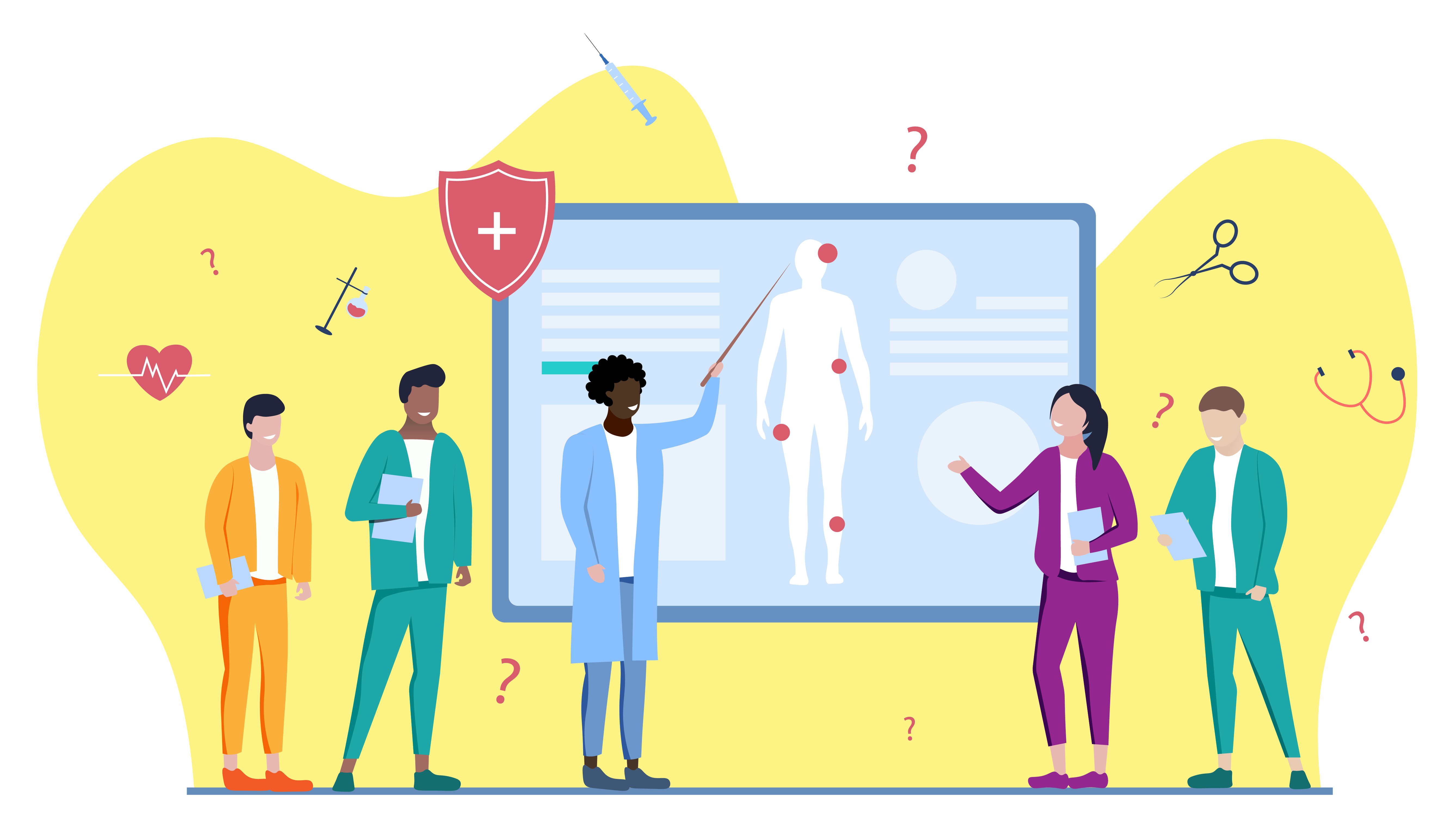
Aquifer’s Social Determinants of Health (SDOH) cases focus on helping students improve health outcomes and equity for patients through realistic patient interactions, encouraging students to reflect on their own implicit biases and cultural awareness. These cases are intended to provide foundational knowledge for students, and foster discussion on this essential topic in classroom settings. By developing communication and clinical skills, students can identify underlying issues and provide patient-centered care.
Since the cases launched in July, we’ve had many positive reviews from students through our Student Advisory Group and five-star case rating comments. Here’s what they’re saying:
An Important Topic Not Always Covered
One of the most recurring pieces of feedback that we have received from students is that the Social Determinants of Health cases are very beneficial because they cover this key topic that is not always covered—or covered well—in their curricula. As one student noted,
“The cases shed light on a really important, sometimes overlooked issue and explained it clearly in a situation that could very well be encountered in real life. This case especially explained what our role as med students is when higher-up professionals do not act in a culturally appropriate manner.”
For students from underrepresented and marginalized backgrounds, these cases are especially valuable and meaningful. “As a person of color going through PA school, I often wonder how is this topic addressed in the academic setting and if it addressed at all. This was a great way to bring this up in a non-threatening setting.”
The cases provide essential information aimed at creating more well-rounded health professions education and breaking down barriers in healthcare. “I think these discussions are necessary for any type of medical educationand training. I think it needs to be a required aspect in continuing medical education as well, as implicit bias is not something to be taught and conquered just once. Implicit bias is something that needs to be reflected on and challenged daily, otherwise, change will never happen.”
Students also recognized how important to introduce the complexities of SDOH, and how integral they are to patient care.
“Individualized care is specific to each patient and with that comes their whole identity, including where they are coming from in terms of ethnicity, race, faith, sexual orientation, community, education, socioeconomic background and status, and so much more. Patients need to feel seen, heard and recognized; it is imperative to quality care and building trust between patient and provider.”
Real-Life Examples and Clinical Context
Students valued the concrete clinical applications of social determinants of health provided in the cases, allowing them to see practical applications of sometimes broad and nebulous concepts. “It’s so important to have clinical context for social determinants of health rather than having them explained as intangible concepts as they frequently are throughout medical school.” Another student noted “These topics come up in bubbles throughout medical school. I felt it was extremely beneficial to put a situation dealing with SDOH into clinical context, particularly having just finished my rotations.”
Students also expressed their appreciation for the fact that the cases expose them to situations and scenarios that they may not otherwise experience in clinical settings. In the words of one student, the cases are “A nice review of common social factors that can influence health. It’s good to have these standardized cases because some students may not get to see patients with these concerns as part of their regular training.” Another student echoed the same sentiment, saying “I appreciated the realistic scenarios these cases presented. I have encountered similar situations during my clinical rotations and would have found these helpful.”
Written from the Student Perspective with Tips to Navigate Challenging Situations
Another theme that was often mentioned in student feedback was the fact that the cases clearly explained students’ roles in challenging situations.“I appreciate having some sample language of how to apologize to the family and how to show co-workers that we can all be better.” Another noted that:
“The guidance on shared decision making and renegotiating through cultural differences was really helpful. I can see myself in a very similar situation. I also appreciated the conflict between listening to the resident and doing what’s right.”
Valuable Both as Prep & During Clinical Rotations
Students saw value in completing the cases as preparation for clinical rotations and as preparation for the wards. Students also noted the value of seeing the topic covered multiple times throughout the curriculum: “It’s important to prime students and make them familiar with these cases before they go into clinicals. The cases are also helpful to remind and reiterate concepts in clinical preps and early in rotations.”
In addition, some students also felt that these cases should become required curriculum because of their importance within the clinical setting. “More cases based on social health determinants should be required for clerkships because I feel like a vast majority of individuals from high social-economic status do not understand these social determinants.” Another noted “I liked that the application case really put the information into practice. I think it could easily fit into a pediatrics section, and the social aspects fit well with many patients I have seen.”
Ready to Start Using the Cases?
There are three SDOH cases available for free for all teachers and learners. The first of these is an Overview and Resources lesson where students are given examples of health care disparities, define healthy equity, outline strategies to manage bias and power differentials in the clinician-patient interaction, and discuss the impact of health beliefs on healthcare outcomes. Case two covers language barriers as a social determinant of health, helping students understand the factors related to language that affect clinician-patient communication and how to identify situations where the use of an interpreter can impact care. The third case presents poverty as a social determinant of health, and helps students identify and address personal biases, providing strategies to improve and maximize communication.
Cases are ideal to assign as self-directed learning or to incorporate into a didactic or discussion session. Although the cases focus on pediatric patients, the principles apply to all patients and can facilitate discussions with preceptors and clinical faculty.
Take advantage of our SDOH Active Learning Module, which provides a ready-to-use optional classroom activity to be used in conjunction with the cases. We encourage you to incorporate the cases into your own flipped classroom, group discussion, or case-based learning session on SDOH or as part of your clinical courses. To ensure these key concepts are covered, add them to your course or clerkship.
Student Advisory Group Survey & Discussion: June 2021
Aquifer Social Determinants of Health Five Star Case Rating Comments: July 1, 2021 – December 31, 2021




